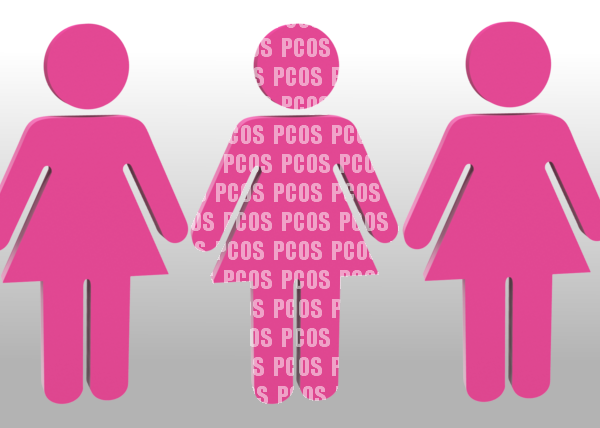
|
Comment on trends in onomastics-the case of PCOS by Kalra et al.
Jyothi Idiculla
Departments of Internal Medicine and Clinical Ethics, St John's Medical College, Bangalore, Karnataka, India
Jyothi Idiculla
Departments of Internal Medicine and Clinical Ethics, St John's Medical College, Bangalore, Karnataka, India
| How to cite this article: Idiculla J. Comment on trends in onomastics-the case of PCOS by Kalra et al. Indian J Endocr Metab 2014;18:245 |
| How to cite this URL: Idiculla J. Comment on trends in onomastics-the case of PCOS by Kalra et al. Indian J Endocr Metab [serial online] 2014 [cited 2014 Mar 24];18:245. Available from: http://www.ijem.in/text.asp?2014/18/2/245/129123 |
Sir,
The earliest description of polycystic ovaries (PCO) dates back to 1721 when Vallisneri reported a "young married peasant woman, moderately obese and infertile with two larger than normal ovaries, bumpy, shiny and whitish, like pigeon eggs'. [1] In 1921 Achard and Theirs observed bearded diabetic women. [2] This was followed in 1935 by Stein and Leventhal's case series of seven women with amenorrhoea, infertility and enlarged cystic ovaries. [3] Polycystic ovaries (PCO) since then have been the focal point of debates in various specialities of modern medicine.
Though polycystic ovaries are included in the Rotterdam diagnostic criteria for PCOS, it can be diagnosed with the other two criteria (hyperandrogensim and chronic anovulation) occurring together without PCO. [4] NIH-NIHCD criteria do not mention it and the Androgen Excess Society has it as an and/or criterion. [5],[6] The pivotal hormonal imbalance is the excess of androgens predominantly ovarian in origin along with insulin resistance, hyperinsulinemia and ensuing cardiovascular risk. The issue of renaming PCOS has been elegantly discussed by Dunaif and Fauser in the September 2013 issue of JCEM. [7] They also quote "Metabolic Reproductive Syndrome (MRS)", a novel nomenclature suggested by Sheila E Laredo, which aptly highlights the hormonal milieu and its implications. Whether it is MRS, EASY or HAPPY, the time has come to give some thought to the name. While the acronyms suggested by Kalra et al. sound appealing, none of them allude to insulin resistance or its consequences. [8] MRS rectifies this by neatly alluding to metabolic syndrome in the name itself.
While connotation to androgenic/metabolic features applies to large section of patients with polycystic ovaries, the nomenclature fails to encompass some phenotypes where hyperandogenemia/ism are not present. Hence, polycystic ovaries should still be used to describe this morphological feature, when found. It is also of note that for obstetricians and gynaecologists especially in the speciality of infertility where ovarian hyper stimulation is dreaded, this would of help. [7]
Also, as molecular biology and genetics advance, molecular targets may be identified and new names put forth. A phenomic approach focusing on phenotypical features is also being suggested by some. Finally to ponder on, why not give Stein and Leventhal due credit for their original observations and continue to name it after them.
 References References |  |
| 1. | Farquar C. Introduction and history of polycystic ovarian syndrome. In: Kovacs GT, Norman R, editors. Polycystic ovarian syndrome, 2nd ed. Cambridge: Cambridge University Press; 2007. p. 4-27.  |
| 2. | Achard C, Theirs J. Le Virilisme pilaire et son association a l›insuffisance glycolytique (diabete des femme a barbe) [Association of hirsutism and diabetes (diabetes of women with a beard)]. Bull Acad Natl Med (Paris) 1921;86:51-83.  |
| 3. | Stein IF, Leventhal ML. Amenorrhea associated with bilateral polycystic ovaries. Am J Obstet Gynecol 1935;29:181-91.  |
| 4. | Rotterdam ESHRE/ASRM-Sponsored PCOS Consensus Workshop Group. Revised 2003 consensus on diagnostic criteria and long-term health risks related to polycystic ovary syndrome. Fertil Steril 2004;81:19-25.  |
| 5. | Zawadzki JK, Dunaif A. Diagnostic criteria for polycystic ovary syndrome; towards a rational approach. In: Dunaif A, Givens JR, Haseltine F, Merriam G, editors. Polycystic ovary syndrome. Boston: Blackwell Scientific; 1992. p. 377-84.  |
| 6. | Azziz R, Carmina E, Dewailly D, Diamanti-Kandarakis E, Escobar-Morreale HF, Futterweit W, et al.; Androgen Excess Society. Positions statement: Criteria for defining polycystic ovary syndrome as a predominantly hyperandrogenic syndrome: An Androgen Excess Society guideline. J Clin Endocrinol Metab 2006;91:4237-45.  |
| 7. | Dunaif A, Fauser BC. Renaming PCOS: A two state solution. J Clin Endocrinol Metab 2013;98:4325-8.  |
| 8. | Kalra S, Baruah MP, Saikia M. Trends in endocrine onomastics: The case of polycystic ovarian syndrome. Indian J Endocrinol Metab 2013;17:545-7.  |
No comments:
Post a Comment